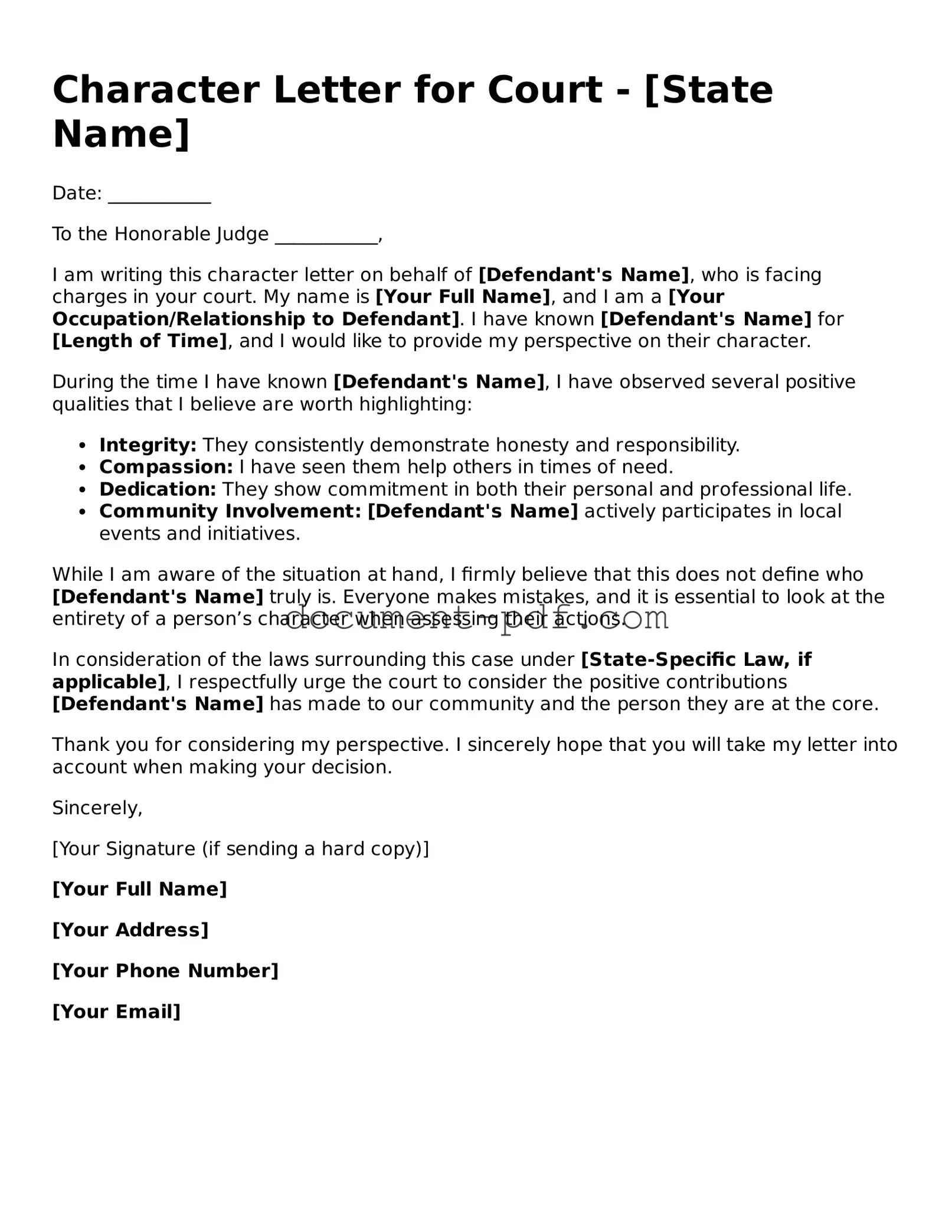The Character Letter for Court is similar to a Support Letter, which is often used in various legal contexts. A Support Letter typically expresses the writer's belief in the character and integrity of the individual involved in legal proceedings. Like the Character Letter, it emphasizes personal experiences and observations that highlight the positive traits of the person in question. Both documents aim to provide the court with a broader understanding of the individual beyond the legal issues at hand.
Another document that shares similarities is the Reference Letter. A Reference Letter, often used in employment or academic settings, provides insight into a person's skills, character, and accomplishments. Much like a Character Letter for Court, it relies on the writer's personal anecdotes and experiences to paint a picture of the individual. Both letters serve as endorsements, helping to establish credibility and character in the eyes of the reader.
To assist in the custody evaluation process, consider the critical insights offered by a comprehensive Character Reference Letter for Child Custody. This document can be invaluable in affirming a parent's fitness and character.
The Personal Statement is another document that parallels the Character Letter for Court. A Personal Statement is commonly required in applications for colleges or scholarships, where the applicant reflects on their experiences and aspirations. Similar to the Character Letter, it allows individuals to present their narrative in a compelling way. Both documents seek to humanize the individual, showcasing their journey and the qualities that define them.
Additionally, the Affidavit of Character can be compared to the Character Letter for Court. An Affidavit of Character is a sworn statement that attests to an individual's character, often used in legal proceedings. While it carries a formal tone and legal weight, it shares the purpose of providing the court with insights into the individual's moral standing. Both documents aim to influence the court's perception of the individual, albeit through different formats and levels of formality.
Letters of Recommendation also bear similarities to the Character Letter for Court. These letters are often written for job applications or academic programs, highlighting an individual's qualifications and character traits. Like the Character Letter, they rely on personal knowledge and observations. Both documents serve to advocate for the individual, providing a narrative that supports their case or application.
Another comparable document is the Testimonial Letter. A Testimonial Letter provides a personal account of an individual's character, often used in various contexts, including legal matters. It shares the same goal as a Character Letter for Court: to offer a firsthand perspective on the individual's behavior and integrity. Both documents can significantly influence the perception of the individual by presenting real-life examples of their character.
The Sentencing Mitigation Letter is also akin to the Character Letter for Court. This type of letter is typically submitted during sentencing hearings to provide context about the defendant's character and circumstances. Like the Character Letter, it aims to evoke empathy and understanding from the court. Both documents seek to present the individual in a more favorable light, emphasizing their positive attributes and the potential for rehabilitation.
Moreover, the Impact Statement can be compared to the Character Letter for Court. An Impact Statement describes the effects of a crime on victims or the community, but it can also include reflections on the character of the offender. Similar to the Character Letter, it aims to provide context and a deeper understanding of the individual’s situation. Both documents serve to inform the court, helping to shape the narrative surrounding the case.
Lastly, the Community Support Letter is similar to the Character Letter for Court. This letter is often written by members of the community who can vouch for an individual's character. It highlights the individual's contributions and standing within the community, much like the Character Letter does. Both documents aim to provide the court with a broader perspective on the individual, emphasizing their positive impact and relationships.
